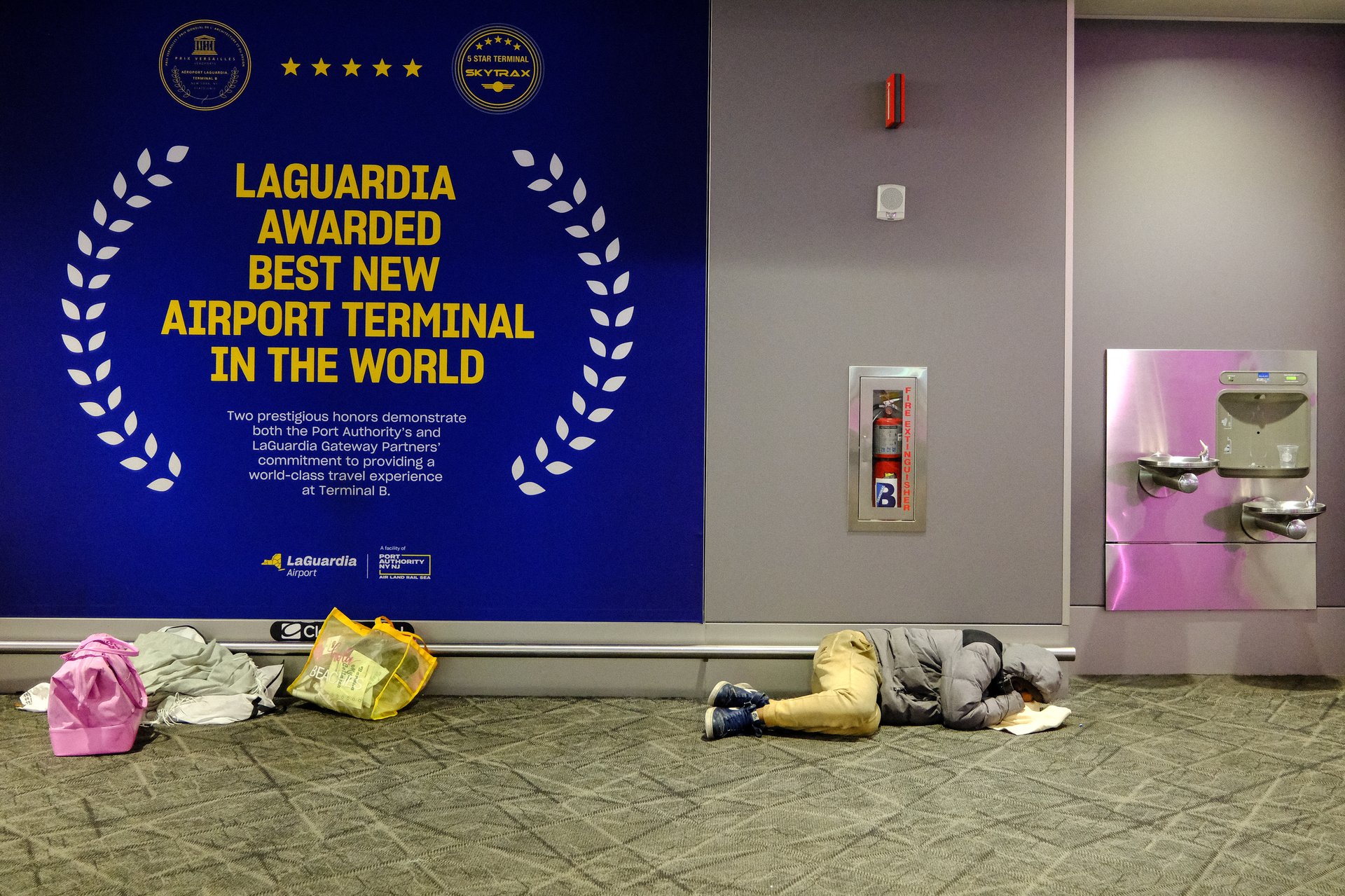The shutdown is ending. But the pain isn't evenly distributed
From airlines to small contractors, the scars of the longest U.S. shutdown will linger for months, even as some sectors prosper and stocks rally

Charly Triballeau/AFP via Getty Images
Finally, after 40+ days, the longest government shutdown in U.S. history is grinding to a close.
Suggested Reading
Late Monday, the Senate approved a stop-gap spending package by a 60-40 vote, keeping most federal agencies funded through January 30. The House is expected to pass it as soon as Wednesday, sending it to President Donald Trump for his signature.
Related Content
That vote will reopen much of Washington, but not before a wave of damage cascades through the nation, with tens of thousands of flights delayed or canceled, 42 million Americans facing food-aid disruptions, and hundreds of thousands of federal workers and contractors forced to go without pay.
But economists caution that the reopening won’t erase the losses. Goldman Sachs spoke of the significant economic impact, likely exceeding any previous shutdown. The Congressional Budget Office estimates as much as $14 billion in output may be permanently lost, affecting fourth-quarter GDP.
Markets appeared to cheer the deal, with the S&P 500 rising as much as 1.5% on Monday alone. But the broader economy will take longer to heal. Here’s a look at how the damage—and relief—breaks down by sector.
Winners
The defense sector
Despite the shutdown, defense contractors likely kept up business as usual, in large part because the Pentagon, constrained yet insulated, continued to function much as usual. Major defense firms were largely insulated, with most operations funded through permanent appropriations. And because the stop-gap bill specifically extends funding for the Department of Veterans Affairs as well as for military construction projects, companies in the larger defense supply chain will likely see higher, smoother cash flow ahead.
Wall Street and shareholders generally
Investors, after riding a bull market for much of 2025, still reacted with enthusiasm to news of the Senate vote and possible House vote. Major indexes rallied. The Nasdaq alone perked up nearly 2%. In recent weeks, prediction markets wavered as to whether a data-blind Federal Reserve would continue to cut rates into the end of the year, but now, with a clearer field and ready access to economic reads, traders appear to favor the odds of a third cut in December.
Big Ag and food manufacturers
The Senate deal funds the Department of Agriculture, stabilizing farm payments and food-safety oversight after weeks of uncertainty. For large food companies, that likely means less disruption to inspections and supply chains.
Private credit and gig platforms
It's reasonable to guess that, during the shutdown, some affected households likely turned to buy-now-pay-later plans, paycheck-advance apps, and gig-work platforms to fill income gaps. The pattern could persist for a few weeks as back pay trickles out into checking accounts, temporarily boosting business for lenders and task-based apps.
Losers
Airlines, airports, tourism
Flight delays became perhaps the shutdown’s sheer most visible symbol. The Federal Aviation Administration throttled air-traffic volumes at major hubs, resulting in thousands of flight cancellations, a wide swath of lines and delays at regional airports, and an estimated $600 million a day in economic losses, according to Airlines for America. Nor will normal operations resume immediately, said Transportation Secretary Sean Duffy.
Even after operations resume, airlines expect a holiday-season hangover as staffing and scheduling normalize.
Federal workers and contractors
Some 800,000 federal employees will receive back pay, but that doesn’t cover late fees, missed mortgage payments, or lost contracting revenue. Small government vendors — who don’t get reimbursed — face lasting damage to their cash flow.
Small businesses
Shops and restaurants near shuttered federal buildings saw traffic dry up for nearly six full weeks. Many lacked the liquidity to bridge the gap, and some may not reopen. Hiring by small businesses likely slowed or stopped, especially among the businesses most directly affected.
Consumers
Disruptions to the Supplemental Nutrition Assistance Program delayed benefits for roughly 42 million low-income Americans, temporarily worsening already widespread food insecurity. The shutdown has also likely dampened consumer confidence heading into the holidays.
Housing
Home sales likely slowed in metro areas with heavy concentrations of federal workers, from Washington and its surrounds to Huntsville. Mortgage applications may have been delayed or slowed down by missing income verifications, with some buyers uncertain about paychecks—while the larger hit to confidence likely rippled across the larger national market of buyers and sellers. Backpay may help some deals close, but the likelihood is that many have already fallen through.
The economy overall
Output lost to the shutdown can’t be easily recaptured or regained. The CBO projects some permanent loss, as well as a potential lingering drag on productivity and hiring through early 2026.
The relief rally in stocks, in other words, may prove another example of a familiar divide — on in which Wall Street surges back first, and Main Street gets left waiting.
